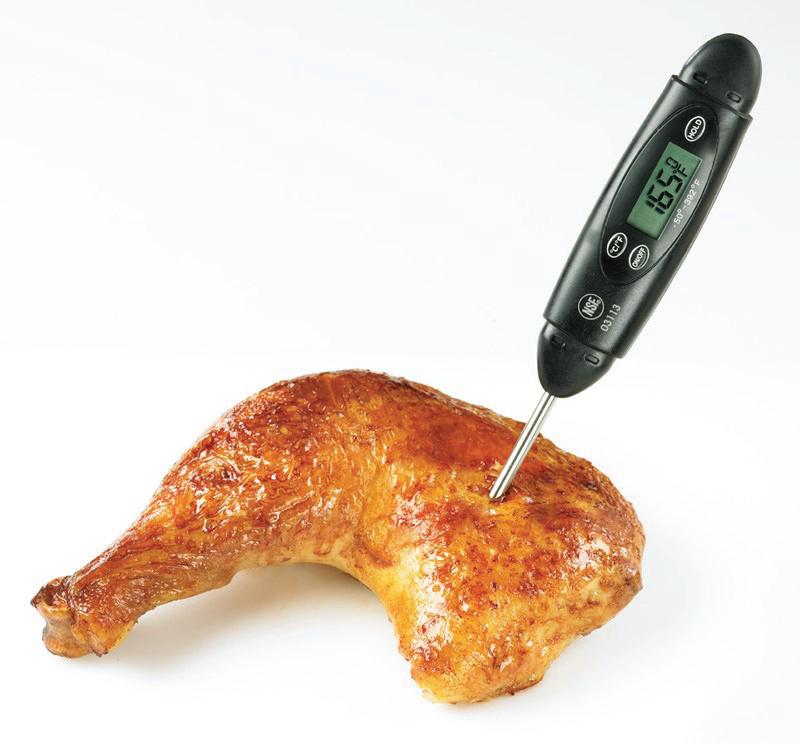
3 minute read
September is National
SEPTEMBER IS NATIONAL CHICKEN MONTH
Submitted by SueAnn Boyd, Healthy Schools Coordinator
Advertisement
There’s a theory going around that chicken is “boring.” But chicken is a very versatile food! Some probably don’t realize that chickens are classified primarily by the size, weight and age of the bird when processed. Chickens are produced to meet specific requirements of the customer, which can be a retail outlet, fast food chain, or institutional buyer, among others. Chicken has become America’s favorite food choice. Buying, handling, storing, and preparing chicken properly will help make chicken more enjoyable and maintain top quality. Good food preparation and safety practices will ensure a meal that family and friends can take pleasure in. When purchasing this delicious meat remember to check the “Sell by” date on the chicken package label. This date indicates the last day the product should be offered for sale.
Fresh chicken carries a USDA-mandated safe food handling and cooking message. Chicken, like all fresh meats, is perishable and should be handled with care to maintain top quality. Never leave chicken in the car, and refrigerate immediately on reaching home to help maintain the highest quality. Never leave the chicken on a countertop at room temperature because bacteria will multiply every ten minutes, meaning after an 8-hour period, you would have approximately 32 million of bacterium on your food! The bacterium is something you can’t see, taste or smell. The USDA does not recommend washing poultry as most people do not clean the surface of the kitchen and sink before cooking. If rinsing whole chicken or parts in cold running water is a personal preference, re-wrap it for storage before cooking and always remember to clean sinks and counter tops thoroughly afterwards with a cap full of bleach to a gallon of water, or use a commercial cleaner, being careful not to chemically cross contaminate your surfaces or food.

When you are ready to prepare poultry, cook it to the proper internal temperature of 165 degrees. Use a meat thermometer as the most accurate indicator for doneness. To check visually for doneness pierce the chicken with a fork and make sure the juices run clear (not pink).
Food safety is a shared responsibility of everyone along the “farm to table” chain, and the following food safety tips for the handling and preparation of chicken are recommended:
• Avoid cross-contamination. Avoid packages that leak. Use a plastic bag found in the produce aisle to prevent leakage onto other foods. • If you are not going home directly from the grocery, use a cooler to keep perishables cold. • Store raw meat and poultry at or below 40 degrees Fahrenheit. • Fresh poultry may be stored in the refrigerator for 1-2 days and in the freezer for 6-9 months; cooked poultry may remain in the refrigerator for 3-4 days and in the freezer for 4 months. • Wash hands, surfaces and utensils before and after preparing or handling raw meat and poultry. • Use and then discard paper towels to wipe up raw poultry juices. Wash sponges and dish cloths often. • Use only an impervious cutting board for poultry/ meats, and do not reuse without thoroughly sanitizing. • Place leftovers in shallow dishes, cool and refrigerate or freeze promptly; never let cooked foods stand at room temperature for more than two hours. • When grilling out, clean the grill before each use to prevent bacterial contamination. • Check the safe handling and cooking instructions that are printed on every consumer package of fresh chicken.
Sources: “Food Safety.” USDA. Accessed August 12, 2020. https://www.fns.usda.gov/ofs/food-safety.
“NATIONAL CHICKEN MONTH - September 2020.” National Today. Accessed August 12, 2020. https://nationaltoday.com/ national-chicken-month/.



